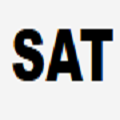It is known that Deep Neural networks (DNNs) are vulnerable to adversarial attacks, and the adversarial robustness of DNNs could be improved by adding adversarial noises to training data (e.g., the standard adversarial training (SAT)). However, inappropriate noises added to training data may reduce a model's performance, which is termed the trade-off between accuracy and robustness. This problem has been sufficiently studied for the classification of whole images but has rarely been explored for image analysis tasks in the medical application domain, including image segmentation, landmark detection, and object detection tasks. In this study, we show that, for those medical image analysis tasks, the SAT method has a severe issue that limits its practical use: it generates a fixed and unified level of noise for all training samples for robust DNN training. A high noise level may lead to a large reduction in model performance and a low noise level may not be effective in improving robustness. To resolve this issue, we design an adaptive-margin adversarial training (AMAT) method that generates sample-wise adaptive adversarial noises for robust DNN training. In contrast to the existing, classification-oriented adversarial training methods, our AMAT method uses a loss-defined-margin strategy so that it can be applied to different tasks as long as the loss functions are well-defined. We successfully apply our AMAT method to state-of-the-art DNNs, using five publicly available datasets. The experimental results demonstrate that: (1) our AMAT method can be applied to the three seemingly different tasks in the medical image application domain; (2) AMAT outperforms the SAT method in adversarial robustness; (3) AMAT has a minimal reduction in prediction accuracy on clean data, compared with the SAT method; and (4) AMAT has almost the same training time cost as SAT.
翻译:众所周知,深神经网络(DNN)容易受到对抗性攻击,DNN的对抗性强度可以通过在培训数据(例如标准对抗性培训(SAT))中增加对抗性噪音来提高DNN的对抗性强度。然而,在培训数据中增加不适当的噪音可能会降低模型的性能,即精确度和稳健度之间的权衡。这个问题已经为整个图像的分类进行了充分的研究,但在医疗应用领域的图像分析任务方面却很少被探索,包括图像分割、标志性探测和物体探测任务。在本研究中,我们表明,在这些医学图像分析任务中,DNNNT方法的对抗性强势强度强度强度强度强度强度强度强度强度强度强度强度强度强度强度强度强度强度强度强度强度强度强。 我们的SAT方法有严重问题:它为所有培训样本强度DNNNAAT产生固定和统一度强度强度强度强度强度强度强度强度强度的反调性噪音; SAT方法在现有的AMAAT上应用了亚AL性AAT的亚调性反调性分析方法。



